How Legos went from humble toy to criminal black market item fueled by L.A. heists
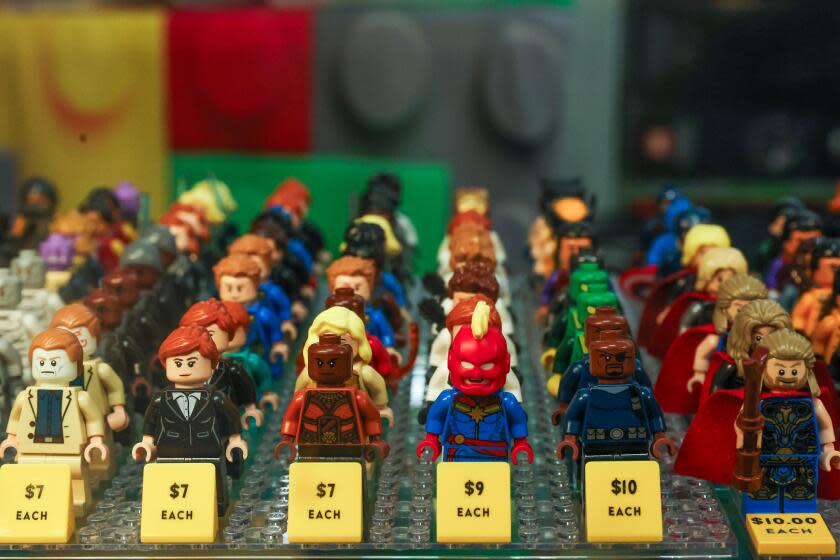
The hooded man darted past shattered glass, his headlamp illuminating the rare collectibles housed in display cases that lined the walls of Bricks & Minifigs in Whittier.
"Ninjago" Ultra Violet (Oni Mask of Hatred). Percival Graves ("Harry Potter" Series 1). Velociraptor with Sand Green Back ("Jurassic World" Blue).
Those sought-after Lego mini-figures were among 600 or more stolen on May 3. In a predawn spree that lasted little more than a minute, the thief stuffed a garbage bag with about $10,000 worth of figurines before sprinting to a waiting car and speeding off.
The heist was one of seven carried out at Bricks & Minifigs outlets across the Southland since April, a $100,000-plus crime spree that, on the heels of other similar incidents, has rattled the growing — but cloistered — world of Lego collectors and merchants.
"Ten years ago I just couldn't have imagined it — I did not think our little hobby was the kind of thing that would attract that kind of crime," said Graham E. Hancock, editor of Blocks, an enthusiast magazine. "The idea that they are taking advantage of really dedicated collectors and resellers ... it is just scary for the hobby and for these businesses."
The COVID-19 pandemic turbocharged the Lego collecting hobby, with homebound collectors blitzing online resellers in search of coveted items. That drove up prices, experts said, and attracted criminals.
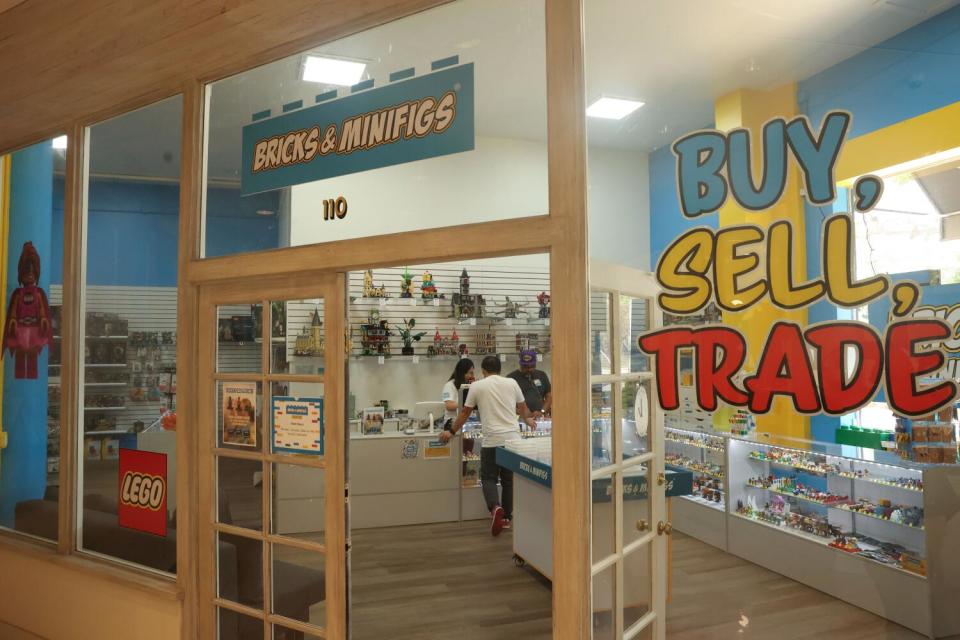
Bricks & Minifigs, a franchised chain with more than 100 locations nationwide, maintains a unique position in the Lego economy. Unlike official Lego stores, Bricks & Minifigs outposts carry valuable sets and figurines no longer in production. Some are sold in their unopened boxes. Others are displayed in glass cases.
The roughly 1.5-inch figurines — known as "minifigs" among hobbyists — can trade for upward of $1,000 and are especially enticing to thieves, said Katie Leuschner, owner of the Whittier Boulevard store.
“You can’t steal a 1960s Mustang and hide that," she said, "but you can hide a mini-figure and stockpile them for years, and they’re only going up in value."
A market matures
These days, Lego encompasses a sprawling, multibillion-dollar ecosystem of toys, video games, retail stores, television shows, films, amusement parks and more.
It's easy to forget the days when children designed their own spaceships and castles out of a stew of mismatched blocks spilled on the living room shag.
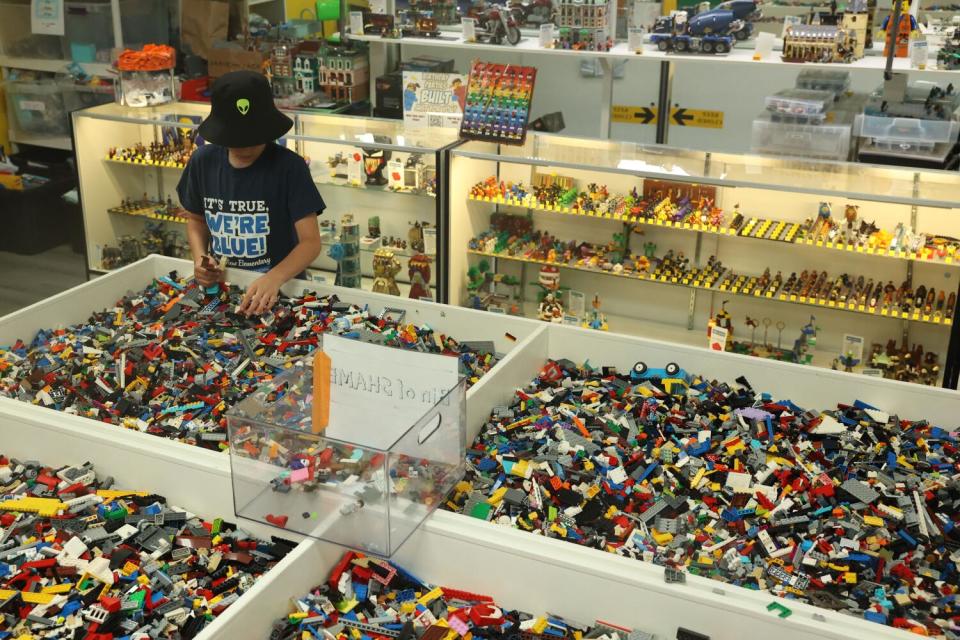
Or that even more recently, Lego Group, a Danish company founded in 1932, appeared in jeopardy.
According to David C. Robertson, author of the Lego history "Brick by Brick," the company foundered in the late 1990s as it made ill-fated attempts to enter the digital space. By 2003, he said, things were dire for Lego, which released its first "Automatic Binding Brick" in 1949 and has since produced so many billions of pieces that a good portion of humanity has felt the pain of stepping on one barefoot.
"It is really hard to overstate how close they were to bankruptcy," said Robertson, noting that Lego Group had even discussed an acquisition by rival Mattel. "They were convinced for a while that the alternative was liquidation."
But the company course corrected by getting back to basics — and understanding it needed "to innovate around the brick," he said. That largely came in the form of storytelling.
"They had to create worlds and characters," said Robertson, a senior lecturer at the MIT Sloan School of Management. "They had to tell those stories with things outside the box: comic books, young adult fiction, movies, apps and ties to other [companies'] intellectual property, like 'Batman' and 'Star Wars.'"
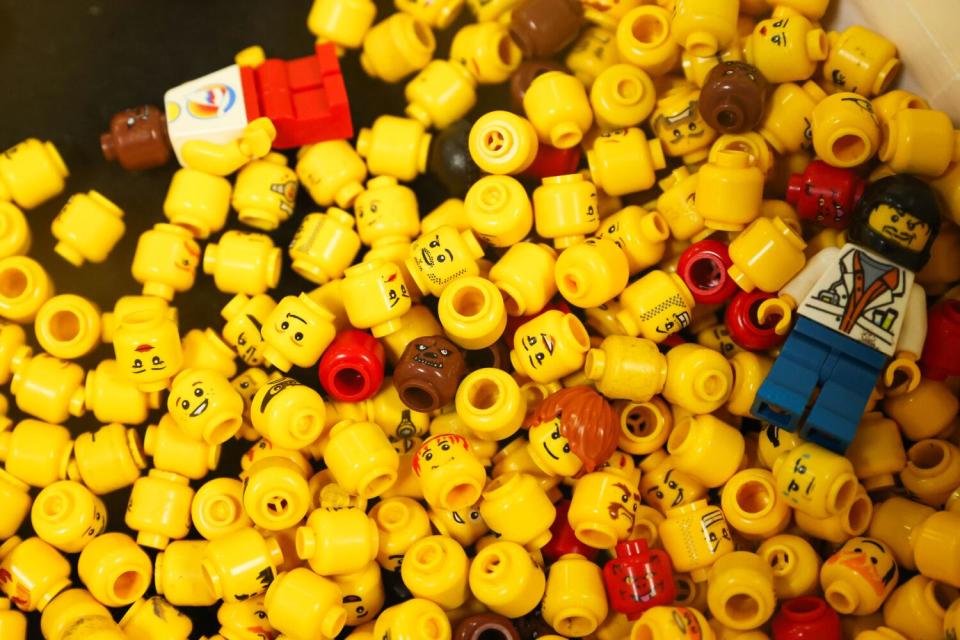
It worked. To some Gen Xers' disdain, children were no longer content building their own creations out of the same bucket of bricks. They wanted new, evermore costly kits — and the hobby became far more expensive.
The turnaround is apparent in the company's financials: Lego Group's revenue in 2023 was $9.65 billion, up about 74% from five years earlier, according to Dow Jones data.
Some of the company's biggest successes in recent years have been entertainment offerings tied to existing intellectual property, such as the "Lego Batman Movie," which grossed $312 million worldwide, and Fox's Emmy Award-nominated competition TV show "Lego Masters."
Recently, popular Lego sets have centered on "Harry Potter," "Jurassic World" and "Star Wars." The first "Star Wars" Legos came out in 1999, and their success showed the company "the power of story to generate sales," Robertson said. Interest in Legos tied to the space Western has only grown: Some of the rarest and most expensive "Star Wars" mini-figures are a light-up Darth Vader that sells for hundreds of dollars and a gold C-3PO that can sell for thousands of dollars.
Lego mini-figures — which are most commonly found in the company's sets and in mystery boxes where the buyer doesn't know what's inside — have been transformed into full-fledged characters through their appearances in films, TV shows and other media. That has put them, and not the bricks, at the center of the play ecosystem. "The mini-figures are the heroes, and let those playing with them be the hero," said Joe Evangelista, a writer at Lego magazine BrickJournal.
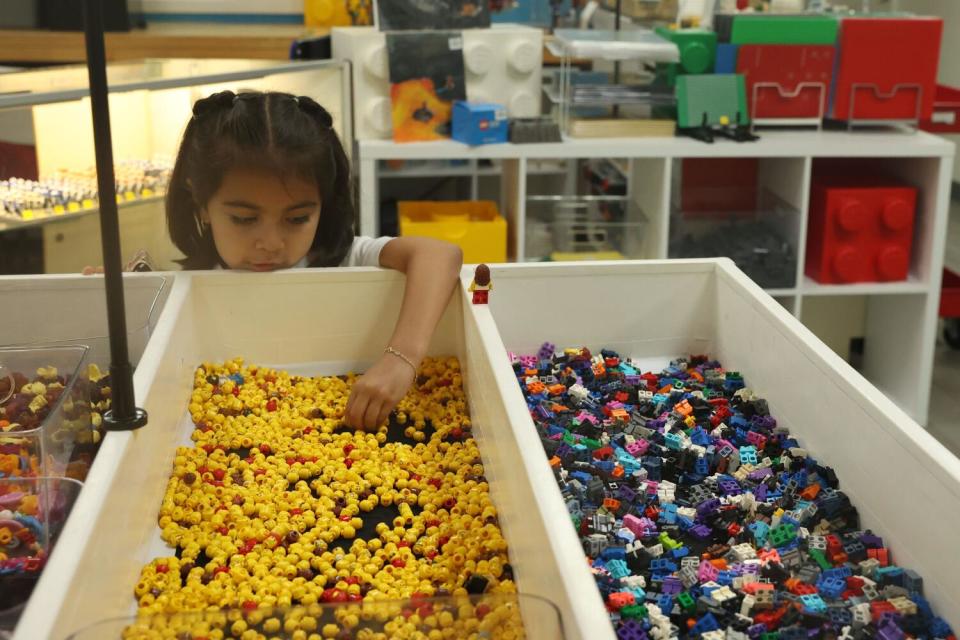
Today, Lego is the rare toy whose appeal transcends childhood, and it maintains a strong base of devotees who are known as "AFOLs," or "adult fans of Lego." Armed with disposable income, AFOLs have turned collecting high-end sets and mini-figures into a booming online business. Robertson, for example, just bought a Lego model of Notre-Dame Cathedral that clocks in at 4,383 pieces and costs $229.99. "Lego rebuilt it before the French," he joked.
Serving consumers like Robertson are an array of websites and traditional media, such as Blocks magazine. Paging through a recent issue, it's clear how central collecting mini-figures is to the hobby. Issue No. 114 included a cover line referencing a celebrated figurine: "LEGO MEDIEVAL TOWN BRINGS BACK THE GOAT."
It was a big deal.
"For 14 years, there was only the one goat you could get," Evangelista noted, adding that a vintage version of the goat went for upward of $100 during the pandemic.
But there are many mini-figures trading for much more than that. According to BrickEconomy.com, the most valuable mini-figure is a limited-edition Spider-Man version given out to attendees at Comic-Con in 2013 that's now worth $5,500. The website lists 16 other figurines valued at more than $1,000.
Robertson said that high prices have driven a "big secondary market for Legos," with several online marketplaces for them, including Lego-owned BrickLink. The scarcity of some mini-figures has made them "a great investment," he said.
They've also become a mainstay of a thriving black market.
The black market for blocks
The last few months have seen a string of Lego-related crimes across Southern California.
In April, days after the Bricks & Minifigs burglaries began, the California Highway Patrol arrested four suspects after officers found them in possession of stolen Legos worth $300,000. They'd allegedly taken sets from retailers including Target and stored the goods at stash houses in L.A. and Orange counties. Then, in early June, the Los Angeles Police Department announced it'd broken up another alleged Lego theft ring, arresting two people and seizing nearly 3,000 boxes of Legos kept at a property in Long Beach.
Authorities have not linked those crimes to the Bricks & Minifigs heists.
Pilfered items are routinely offered on internet sales platforms including EBay and Facebook Marketplace, according to Lego dealers and other experts. That means that hobbyists have to rely on their own judgment — and ethics — when conducting business online.
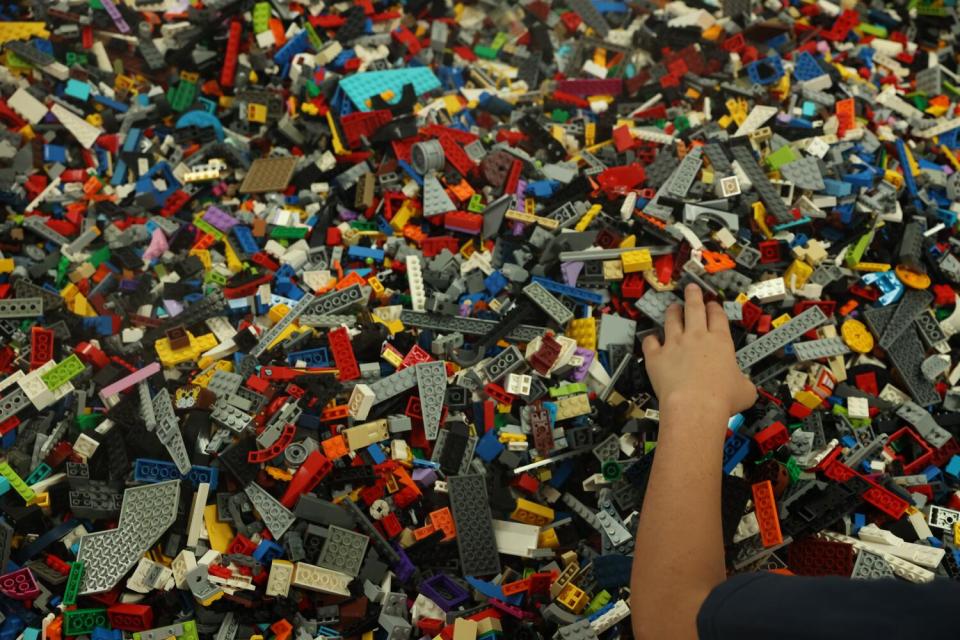
Veteran Lego dealer James Burrows said red flags include sellers who "have a tremendous amount of something and they are not a collector."
Burrows said that BrickLink, which boasts more than 18,000 sellers, including nearly 6,000 in the U.S., is a safer place to buy and sell than the mainstream online marketplaces. The site gives members the ability to report concerning behavior or activity to the website's administrators.
Lego Group, of course, is aware of the illicit sale of its toys. A company spokesperson directed The Times to an online resource that outlines how consumers can spot fake online Lego stores, among other issues.
Tracking down stolen Legos online is a tall order. Shauna Garcia, owner of the Bricks & Minifigs Ontario store, which lost about 500 mini-figures worth nearly $7,000 in an April heist, said that she's been looking for her items on Facebook Marketplace but hasn't spotted any. "They’re not being sold there in a super obvious way," she said. "I'm keeping an eye out for lots and lots of minis."
Weeks after her store was burgled, Leuschner had a strange interaction with a man offering her thousands of Legos "at a very low price." The would-be seller, she said, was Richard Siegel, one of the people who, according to police, allegedly operated the theft ring that stored more than 2,800 ill-gotten Legos in Long Beach.
Reached by telephone, Siegel, 71, told The Times that he "for sure" wasn't guilty, declining to comment further.
Burrows, who is based in Florida, said that he routinely deals with suspect sellers at the Brick University, his brick-and-mortar store.
"People will show up, and it is the usually the same story: 'Oh , my boss closed their comic store and paid me with Legos,'" he said. "Or, 'My kid got extras of these [for a] birthday.'"
Burrows spoke to The Times while en route to Brickworld, a Lego fan convention held in Chicago last weekend. He said that items stolen in L.A. could have wound up at the expo and been sold to unsuspecting attendees.
"They could easily be unloaded," he said. Vendors "will have all these high-end figures, and they will give you a good story and an amazing deal."
Opening amid a crime wave
By the time Rob and Betty Poquez opened their Bricks & Minifigs franchise in Pasadena on May 4, three of their sister shops had been burgled. That prompted the Poquezes to make some changes.
The crime "informed a lot of the decision-making for our store," Rob Poquez said.
He said that they reconsidered everything, including their end-of-day procedures and how the space would be staged. Valuable "Star Wars" sets and mini-figures are housed in a glass case at the rear of the store. It recently displayed a Republic Cruiser with mini-figures (price: $350) and a Republic Gunship with mini-figures ($600).
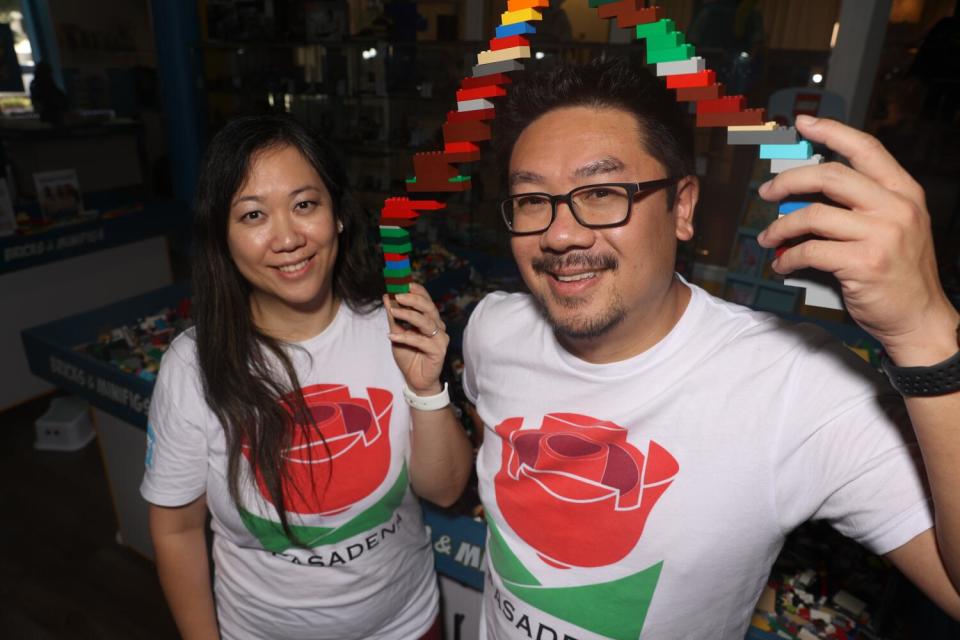
The Poquezes are also wary of people trying to sell them stolen goods. So far, they've not had a transaction that "felt uncomfortable," Rob Poquez said. "We get a lot of kids with families." And, owing to a rule set by Lego, Bricks & Minifigs operators are not allowed to buy new, currently-in-production sets from consumers, Betty Poquez said, which "helps us avoid stolen goods."
On a recent afternoon, a preteen boy stood in front of a large bulk bin at the center of the couple's store and surveyed his options. The Legos plinked as he sifted through mounds of blocks under the gaze of at least five wall-mounted security cameras.
A small container at the edge of the bin was labeled "WALL OF SHAME" — this was where customers put any non-Lego pieces found during their rummaging. A sign explained the bulk pricing, starting at $8 to fill a small tub.
This version of the hobby seemed far removed from the world of AFOLs and $1,000 mini-figures — and the sort of crime that had been visited upon the other local branches of Bricks & Minifigs.
The boy's father leaned in to explain how the bulk bin let him get a bunch of Legos on the cheap.
“This,” he told his son, “is an opportunity."
This story originally appeared in Los Angeles Times.


